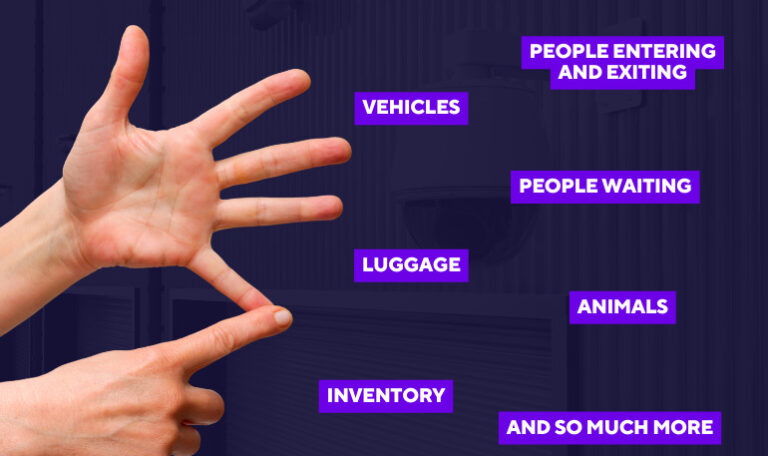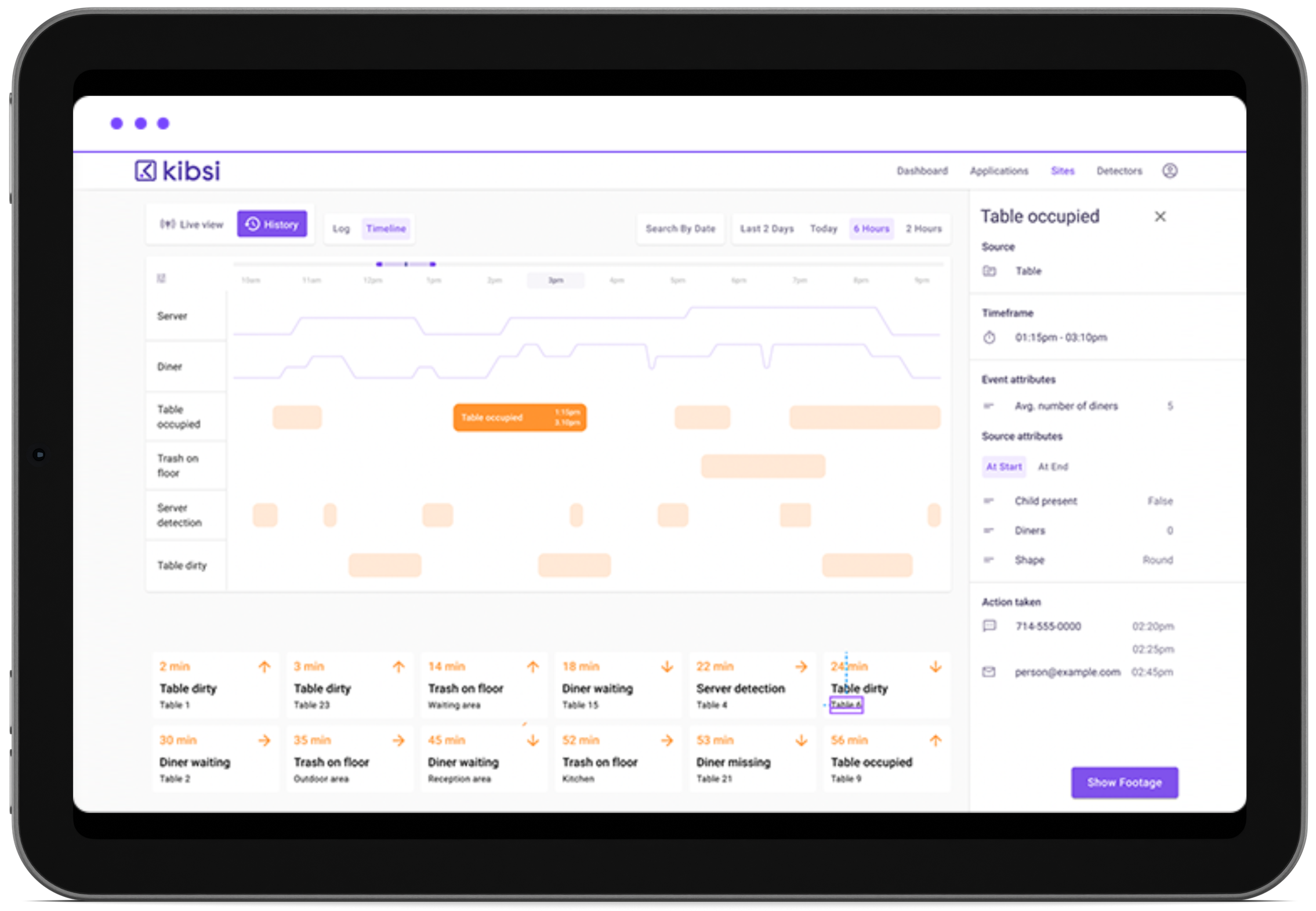When it comes to industries like manufacturing, supply chain, and logistics, computer vision technology is revolutionizing operations by enabling automated systems to interpret and act on visual data. As these industries face increasing demands for efficiency, accuracy, and cost-effectiveness, computer vision offers a powerful tool to optimize processes and gain valuable insights. Organizations in these sectors face a pivotal decision: build a custom computer vision solution or opt for an existing platform. This blog explores both avenues, helping you navigate the complexities and benefits of each to find the best fit for your operational needs.
Understanding Computer Vision Solutions
Computer Vision Defined: Computer vision is a field of artificial intelligence that allows machines to understand and interpret the visual world through digital images and videos. By employing advanced algorithms, deep learning models, and specialized hardware, these systems can identify, classify, and interact with objects in their environment. The key components of a computer vision system include image acquisition, preprocessing, feature extraction, and classification or regression. Through this process, computer vision enables machines to perceive and analyze visual data, enhancing decision-making and operational efficiency.
Computer vision technology has the potential to revolutionize various aspects of manufacturing, supply chain, and logistics operations. By leveraging the power of visual data analysis, organizations can streamline processes, improve efficiency, and gain valuable insights. Here are some key applications of computer vision in these sectors:
- Quality Control:
- Automated Defect Detection: Computer vision algorithms can accurately identify defects, anomalies, or inconsistencies in products or components during the manufacturing process.
- Non-Destructive Testing: Computer vision techniques can be employed for non-invasive quality inspections, such as detecting cracks.
- Inventory Management:
- Real-Time Inventory Tracking: Computer vision systems can automatically track and count inventory levels by analyzing images or video feeds of storage areas.
- Shelf Monitoring: In warehouses or retail settings, computer vision can monitor shelf occupancy and alert staff when items are running low or out of stock.
- Logistics Optimization:
- Package Identification and Sorting: Computer vision can streamline package handling processes by automatically identifying and classifying packages based on labels, barcodes, or other visual markers.
- Picking and Packing Optimization: By analyzing video feeds of picking and packing operations, computer vision systems can optimize worker movements, identify bottlenecks, and provide real-time guidance to enhance productivity. The technology can also verify the accuracy of picked items and ensure proper packaging, minimizing errors and improving order fulfillment accuracy.
- Safety and Security:
- Worker Safety Monitoring: By analyzing video feeds, the computer vision system can detect unsafe actions, such as workers not wearing required personal protective equipment (PPE), entering restricted areas, or engaging in risky behaviors, and alert supervisors for immediate intervention.
- Access Control and Intrusion Detection: Computer vision-based security systems can recognize and verify authorized personnel, detect unauthorized access attempts, and monitor suspicious activities in real-time.
These are just a few examples of how computer vision can be applied in manufacturing, supply chain, and logistics. As the technology continues to advance, more innovative use cases are likely to emerge, further optimizing operations and driving business value in these sectors.
Custom Computer Vision Solutions vs. Computer Vision Platforms:
When considering the implementation of computer vision technology in manufacturing, supply chain, or logistics operations, organizations face a critical decision: whether to build a custom solution from scratch or leverage a pre-built platform like Kibsi. Each approach has its own set of advantages and disadvantages, and the choice ultimately depends on factors such as specific business requirements, available resources, and long-term strategic goals.
Building Custom Computer Vision Solutions
Pros:
- Tailored Solutions: Custom computer vision solutions are developed to perfectly align with an organization’s specific operational workflows and unique challenges. They can be designed to seamlessly integrate with existing systems, such as enterprise resource planning (ERP) or warehouse management systems (WMS), ensuring a smooth flow of data and minimizing disruptions to established processes. Custom solutions take into account the intricacies of a particular manufacturing line, supply chain network, or logistics operation, enabling a highly targeted and efficient approach to visual data analysis.
- Control and Flexibility: When building a custom computer vision solution, organizations have full control over the technology stack, architecture, and functionality. This level of ownership allows for precise compliance with industry-specific standards, regulations, and security requirements. For example, in heavily regulated sectors like pharmaceuticals or aerospace, custom solutions can be engineered to meet stringent quality control and traceability demands. Additionally, custom solutions provide the flexibility to adapt and scale as business needs evolve, allowing organizations to incorporate new features, integrate with emerging technologies, or expand the scope of their computer vision applications as requirements change over time.
Cons:
- High Costs: Building a custom computer vision solution from the ground up requires substantial financial investment. Organizations need to allocate significant resources to cover the costs of development, infrastructure setup, ongoing maintenance, and scaling. This includes expenses related to hardware procurement, software licensing, cloud computing services, and specialized talent acquisition. Additionally, custom solutions often require a dedicated in-house team or external consultants, further increasing the overall cost of ownership.
- Resource Intensive: Developing and maintaining a custom computer vision solution demands a significant amount of specialized expertise and dedicated resources. Organizations need to assemble a team of skilled professionals, including computer vision engineers, data scientists, software developers, and domain experts, to design, implement, and troubleshoot the system. This can strain internal resources, particularly for organizations with limited in-house technical capabilities. Furthermore, the ongoing management and support of a custom solution require continuous effort, diverting resources from other critical business areas.
- Longer Time to Market: Building a computer vision system from scratch is a time-consuming process. It involves extensive research, data collection, algorithm development, testing, and refinement. This lengthy development cycle can significantly delay the deployment of the solution and prolong the time it takes to start realizing the benefits of computer vision technology. In fast-paced industries where time-to-market is crucial, the extended development timeline of custom solutions can put organizations at a competitive disadvantage.
Leveraging a Computer Vision Platform
Pros:
- Speed of Deployment: Platform-based computer vision solutions, such as Kibsi, offer a rapid path to implementation. These platforms come with pre-configured models, established infrastructures, and intuitive interfaces, enabling organizations to deploy and start benefiting from computer vision capabilities quickly. By leveraging pre-built components and proven architectures, organizations can significantly reduce the time and effort required to get a computer vision system up and running. This accelerated deployment allows businesses to swiftly address pressing operational challenges and start deriving value from visual data analysis.
- Cost-Effectiveness: Opting for a platform-based solution can be a cost-effective approach to implementing computer vision technology. These platforms minimize the need for extensive in-house expertise and development efforts, making advanced computer vision capabilities more accessible to organizations with limited technical resources. By leveraging the platform provider’s existing infrastructure, organizations can avoid the high upfront costs associated with building and maintaining their own hardware and software stack. Additionally, platform-based pricing models often offer flexibility, allowing businesses to scale their usage and costs based on their specific needs and growth.
- Continuous Innovation and Support: Platform providers like Kibsi are dedicated to continuously improving and expanding their offerings. They invest heavily in research and development to stay at the forefront of computer vision technology, regularly introducing new features, enhanced algorithms, and expanded capabilities. This continuous innovation ensures that organizations can benefit from the latest advancements without the need for significant internal development efforts. Moreover, leading platforms offer robust customer support, with dedicated teams available to assist with implementation, troubleshooting, and optimization, ensuring a smooth and successful deployment.
- Scalability and Flexibility: Computer vision platforms are designed to scale seamlessly as an organization’s needs grow. Whether it’s processing increasing volumes of visual data, expanding to new facilities, or adding new use cases, platforms like Kibsi can accommodate evolving requirements without the need for extensive infrastructure overhauls. This scalability allows organizations to start with a focused implementation and gradually expand their computer vision capabilities over time. Furthermore, platform-based solutions often provide a high degree of flexibility, with customization options and integrations that allow organizations to tailor the system to their specific needs.
Cons:
- Limited Customization: While platform-based computer vision solutions offer a range of configuration options and pre-built models, they may not provide the same level of granular customization as a purpose-built solution. Certain highly specific or niche requirements may not be readily available out-of-the-box. However, it’s important to note that leading platforms like Kibsi are designed to accommodate a wide range of industry-specific use cases and offer extensive customization capabilities. In most cases, the platform’s flexibility and the provider’s willingness to collaborate closely with customers can address even the most unique requirements.
- Dependency on the Platform Provider: When opting for a platform-based computer vision solution, organizations are relying on the platform provider for ongoing support, updates, and enhancements. While this can be advantageous in terms of continuous innovation and technical expertise, it also means that organizations are dependent on the provider’s roadmap and priorities. If the platform provider’s focus shifts away from specific features or industries, it may impact the long-term suitability of the solution. However, reputable providers like Kibsi have a strong commitment to their customers’ success and actively engage with their user community to align their development efforts with real-world needs.
- Data Privacy and Security Considerations: Implementing a computer vision platform involves entrusting sensitive data to a third-party provider. Organizations must carefully evaluate the platform provider’s data privacy and security measures to ensure compliance with internal policies and regulatory requirements. While leading platforms like Kibsi prioritize data security and offer robust protection mechanisms, it’s crucial for organizations to conduct thorough due diligence and have clear data governance agreements in place. This includes understanding data ownership, storage locations, access controls, and the provider’s overall security framework.
Factors to Consider When Choosing a Solution
When deciding between a custom-built or platform-based computer vision solution, consider the following key factors:
- Business Needs and Goals: Ensure that the chosen solution aligns with your organization’s long-term objectives and can effectively address your specific operational challenges. Consider how the solution will integrate with existing systems and processes.
- Technical Capabilities: Assess your internal team’s skills and expertise in developing and maintaining a custom computer vision solution. If in-house capabilities are limited, a platform-based approach may be more suitable.
- Budget and Resources: Evaluate the initial and long-term costs associated with each option, including development, infrastructure, maintenance, and scaling expenses. Determine whether the required financial and human resources align with your organization’s budget and capacity.
- Data Security and Privacy: Consider the sensitive nature of the data involved and the importance of maintaining strict security and privacy standards. Assess how each solution approaches data protection and complies with relevant regulations.
- Integration and Scalability: Evaluate the ease of integrating the computer vision solution with your existing technology stack. Consider the scalability of the solution to accommodate future growth and evolving requirements.
Real-World Examples
Example 1 – Quality Control in Electronics Manufacturing: An electronics manufacturer implemented Kibsi’s platform-based computer vision solution to enhance quality control on their production lines. By leveraging pre-trained models for defect detection and anomaly identification, the manufacturer was able to deploy the system and quickly start identifying issues in real-time. The platform’s intuitive interface allowed operators to monitor the system and take corrective actions promptly and easily. As a result, the manufacturer significantly reduced defect rates, improved product quality, and increased overall efficiency.
Example 2 – Inventory Optimization in Pharmaceutical Supply Chain: A pharmaceutical company integrated a custom-built computer vision solution to optimize inventory management across its supply chain. The tailored solution was designed to accurately track and count stock levels, monitor storage conditions, and alert staff of any discrepancies or potential issues. By leveraging the custom solution’s seamless integration with the company’s existing inventory management system, the pharmaceutical company gained real-time visibility into its stock, reduced manual errors, and improved inventory accuracy. The custom approach allowed the company to maintain strict compliance with industry regulations and protect sensitive data.
Conclusion
Choosing between a custom-built and platform-based computer vision solution requires careful consideration of your organization’s unique needs, resources, and strategic goals. Custom solutions offer unparalleled control, flexibility, and alignment with specific requirements, but come with higher costs and longer development times. On the other hand, platform-based solutions like Kibsi provide a quick, cost-effective, and scalable entry point into computer vision, with the benefits of continuous support and updates.
By evaluating factors such as business objectives, technical capabilities, budget, data security, and integration requirements, organizations can make an informed decision on the best approach to leverage computer vision in their manufacturing, supply chain, or logistics operations.
Unlock the potential of computer vision in your organization with Kibsi’s flexible and adaptable platform. Our team of experts is ready to help you identify the most effective solution for your specific needs and guide you through the implementation process. Contact us today to schedule a consultation and discover how Kibsi can transform your operations, improve efficiency, and drive business growth.







